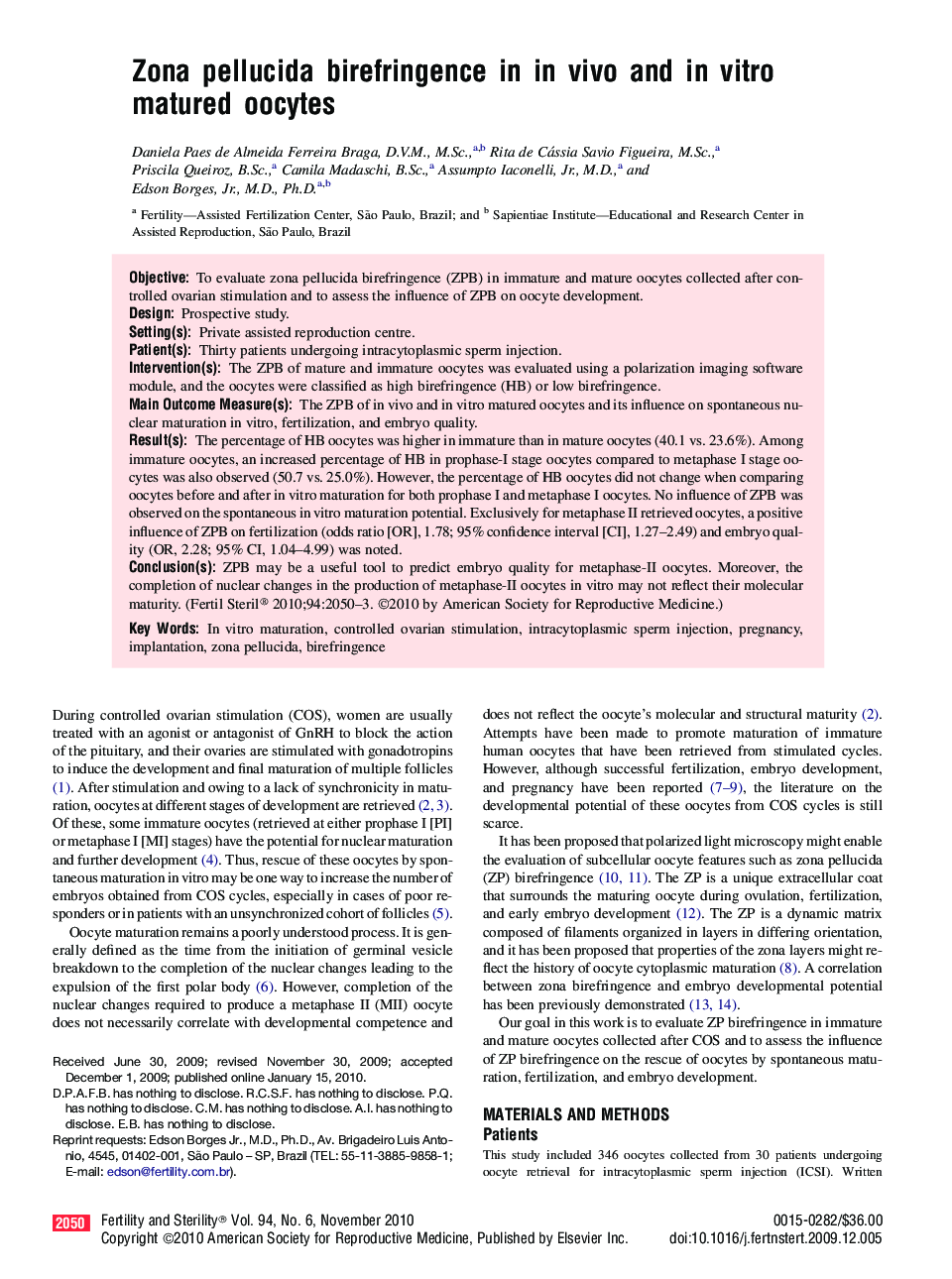| Article ID | Journal | Published Year | Pages | File Type |
|---|---|---|---|---|
| 3932819 | Fertility and Sterility | 2010 | 4 Pages |
ObjectiveTo evaluate zona pellucida birefringence (ZPB) in immature and mature oocytes collected after controlled ovarian stimulation and to assess the influence of ZPB on oocyte development.DesignProspective study.Setting(s)Private assisted reproduction centre.Patient(s)Thirty patients undergoing intracytoplasmic sperm injection.Intervention(s)The ZPB of mature and immature oocytes was evaluated using a polarization imaging software module, and the oocytes were classified as high birefringence (HB) or low birefringence.Main Outcome Measure(s)The ZPB of in vivo and in vitro matured oocytes and its influence on spontaneous nuclear maturation in vitro, fertilization, and embryo quality.Result(s)The percentage of HB oocytes was higher in immature than in mature oocytes (40.1 vs. 23.6%). Among immature oocytes, an increased percentage of HB in prophase-I stage oocytes compared to metaphase I stage oocytes was also observed (50.7 vs. 25.0%). However, the percentage of HB oocytes did not change when comparing oocytes before and after in vitro maturation for both prophase I and metaphase I oocytes. No influence of ZPB was observed on the spontaneous in vitro maturation potential. Exclusively for metaphase II retrieved oocytes, a positive influence of ZPB on fertilization (odds ratio [OR], 1.78; 95% confidence interval [CI], 1.27–2.49) and embryo quality (OR, 2.28; 95% CI, 1.04–4.99) was noted.Conclusion(s)ZPB may be a useful tool to predict embryo quality for metaphase-II oocytes. Moreover, the completion of nuclear changes in the production of metaphase-II oocytes in vitro may not reflect their molecular maturity.
